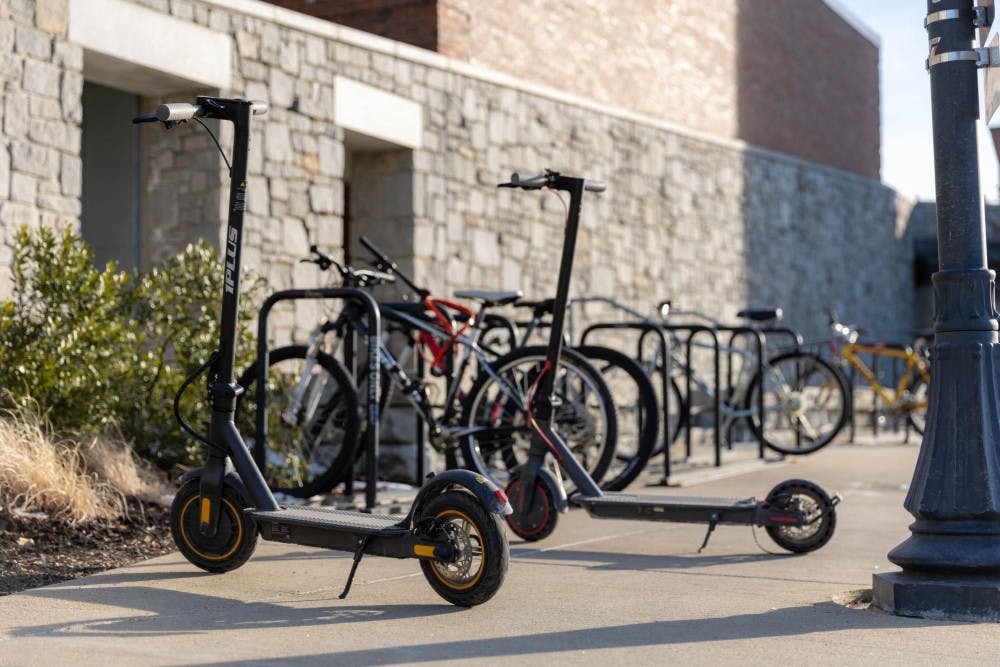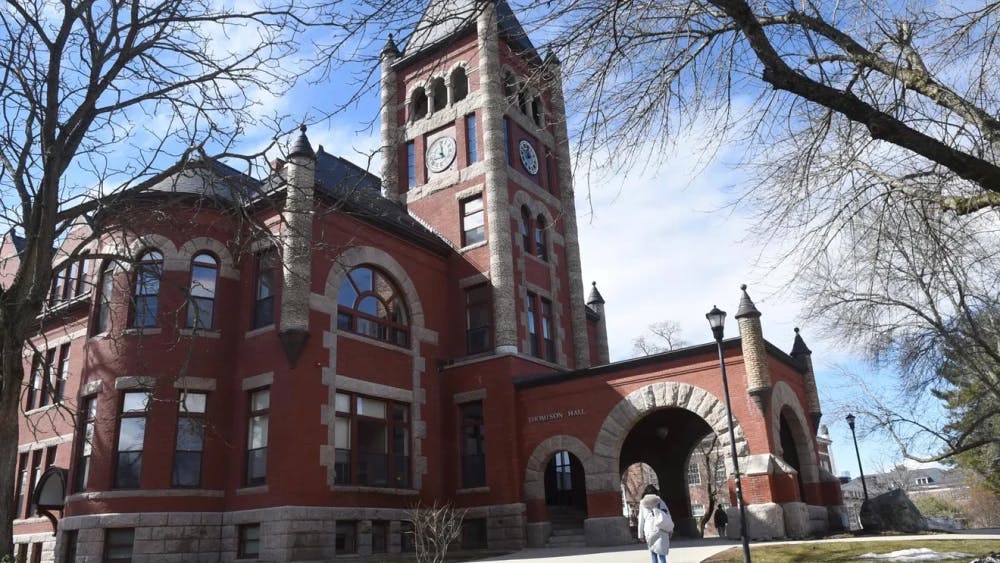It’s common to see students finding alternative ways to get to class in 2024, and the changing of seasons does not stop their innovation. In the upcoming months of rain and snow, electronic motorized devices need a place to escape the elements.
The University of New Hampshire’s (UNH) recent ban on bringing these devices inside dining and residence halls has made parking and storing e-scooters more challenging. The ban came last semester after a device caught on fire in a bike room, resulting in what students referred to as “Scootergate.” As of right now, the ban only concerns bringing these devices indoors.
The Memorial Union Board of Governors (MUBOG) held a forum on Feb. 15 to brainstorm possible solutions for the storage dilemma. The student-run organization aims to project the voices of their peers and reflect the student body’s opinions in the MUB’s future advancements.
At individual tables, students talked amongst themselves with the guidance of a MUBOG facilitator. Molly Nguyen, business manager for MUBOG, led one conversation, with most questions directly referencing MUB storage and general perceptions of e-scooters.
“I think, especially with electric vehicles, you don’t want them to get wet. Anything with batteries, they could short,” said Ryan Baer, student and event officer for UNH’s Electric Vehicle Organization (EVO). While bike racks may seem like an easy option, the lack of coverage isn’t compatible with New England weather.
Most students expressed that there is a clear demographic that would benefit from some changes in storage options, as a considerable amount of students rely on e-scooters as a mode of transportation.
“We see a lot of them [scooters] already, and I think it’s just going to keep growing in the coming years,” Baer said.
Similarly, as popularity and demand grow for these transportation options, more variations are being adopted.
“E-scooters used to resemble a normal razor scooter, but I’ve noticed there’s a lot more people using scooters that go faster and are bigger,” said Adam Elsmer, student and director of membership for EVO.
When the small group activity concluded, Christian Lipovsky, chair of MUBOG, initiated the next portion of the meeting: outlining potential storage options, which were printed and lined on the wall. Students were able to express their preferences with colored stickers. As green, yellow and orange dots began to cover the images, it was clear which choice was ideal: adding an overhang to already-existing bike racks on campus.
With this input from the student body, MUBOG will be able to communicate the results to other campus facilities; but for now, the future of transportation on campus will remain up in the air as students and faculty work to create a resolution.
The University of New Hampshire’s (UNH) recent ban on bringing these devices inside dining and residence halls has made parking and storing e-scooters more challenging. The ban came last semester after a device caught on fire in a bike room, resulting in what students referred to as “Scootergate.” As of right now, the ban only concerns bringing these devices indoors.
The Memorial Union Board of Governors (MUBOG) held a forum on Feb. 15 to brainstorm possible solutions for the storage dilemma. The student-run organization aims to project the voices of their peers and reflect the student body’s opinions in the MUB’s future advancements.
At individual tables, students talked amongst themselves with the guidance of a MUBOG facilitator. Molly Nguyen, business manager for MUBOG, led one conversation, with most questions directly referencing MUB storage and general perceptions of e-scooters.
“I think, especially with electric vehicles, you don’t want them to get wet. Anything with batteries, they could short,” said Ryan Baer, student and event officer for UNH’s Electric Vehicle Organization (EVO). While bike racks may seem like an easy option, the lack of coverage isn’t compatible with New England weather.
Most students expressed that there is a clear demographic that would benefit from some changes in storage options, as a considerable amount of students rely on e-scooters as a mode of transportation.
“We see a lot of them [scooters] already, and I think it’s just going to keep growing in the coming years,” Baer said.
Similarly, as popularity and demand grow for these transportation options, more variations are being adopted.
“E-scooters used to resemble a normal razor scooter, but I’ve noticed there’s a lot more people using scooters that go faster and are bigger,” said Adam Elsmer, student and director of membership for EVO.
When the small group activity concluded, Christian Lipovsky, chair of MUBOG, initiated the next portion of the meeting: outlining potential storage options, which were printed and lined on the wall. Students were able to express their preferences with colored stickers. As green, yellow and orange dots began to cover the images, it was clear which choice was ideal: adding an overhang to already-existing bike racks on campus.
With this input from the student body, MUBOG will be able to communicate the results to other campus facilities; but for now, the future of transportation on campus will remain up in the air as students and faculty work to create a resolution.














